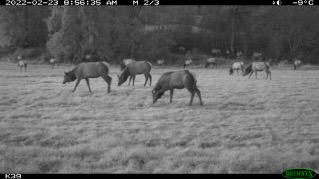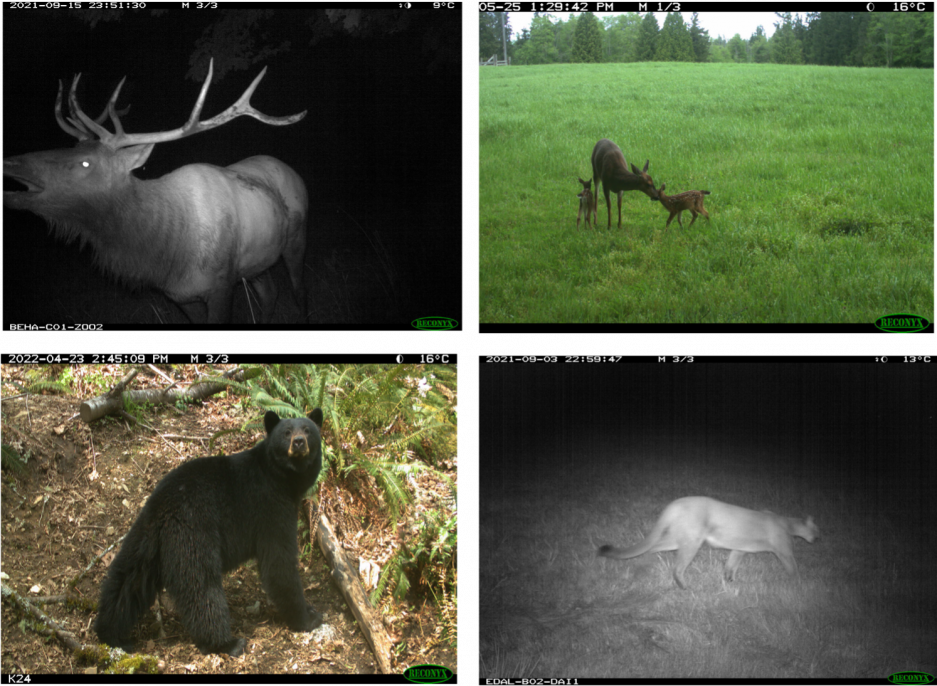Like other elk species and subspecies of the northern hemisphere, Roosevelt elk (Cervus elaphus roosevelti) readily habituate to human activities such as forestry operations, road traffic, agricultural fields, and approaches by people, particularly in areas next to hiding cover. In the southeast region of Vancouver Island near Duncan, elk typically appear on the margins of croplands in groups that vary seasonally in size and demographic ratios. There appears to be widespread agreement among landowners that Roosevelt elk are becoming overly abundant and reliant on anthropogenic habitat. Despite the increasingly sedentary and habituated behaviour of these elk, there is little information about their population size, relative abundance, seasonal distribution, and the processes promoting habituation. Through my Master’s research (St. Clair Lab; University of Alberta), I am leading the Cowichan Valley Elk Project, a collaborative project with King’s University and local landowners and managers to evaluate these issues for elk in the Cowichan Valley.

Our study takes place on the properties of 20 landowners, predominantly dairy farmers, in the Cowichan Valley near Duncan (Vancouver Island). This urbanizing landscape includes natural forests, agriculture fields and infrastructure, roads, urban areas, and adjacent forestry with increasing rates of human-elk conflict. We deployed 36 remote cameras along the edges of crop fields where elk were previously observed. We will complement the camera data with a citizen science initiative using iNaturalist and a public Google form, allowing the general public to report elk sightings in the area. By incorporating both camera data and local ecological knowledge, we hope to:
- provide an estimate of the minimum population size of elk for the monitored region,
- provide an estimate of the maximum group size and group composition for each camera site,
- describe the population distribution, and
- evaluate elk visitation rate and behaviour at each camera site in response to land use practices, predator abundance, and the time of day.
We also hope to conduct a predator-playback experiment with video-enabled cameras in the summer of 2023 to examine the behavioural response and habituation process of elk to predator-resembling acoustic stimuli.
We are currently processing our camera images which contain a lot of elk and cattle, as well as several other species. We will return to the field in February 2023 to replace camera batteries and retrieve another six months of data.

We hope this study will inform the management of human-elk conflict associated with damage to crops and regenerating forests, wildlife-vehicle collisions, property damage, and risk of human injury from habituated animals. We are excited about the collaborative nature of this project and the relevance of this information to landowners, government agencies, and local settler and first nations communities. Ultimately, we hope our results can support new, focused management actions that will have lasting effects in mitigating human-elk conflict.
Written by Kate Rutherford, MSc student, St. Clair Lab, University of Alberta (clruther@ualberta.ca). The project team includes Dr. Colleen Cassady St. Clair (University of Alberta), Dr. Darcy Visscher (King’s University), and Graeme Fowler (Contractor for BC Ministry of Agriculture).